There are more images about the early and Middle Bronze Age on the next site
There are more images about the Iron Age on the next site (#1)
There are more images about the Iron Age on the next site (#2)
There are more images about the Iron Age on the next site (#3)
There are more images about bronze casting techniques on the next site
Index Dutch Bronze Age
Index first farmers in the Netherlands
Images about the Late Dutch Bronze Age
I hereby wish to thank Mr. Sander van Houthum for his help in making this site possible.
All findings are from the Netherlands, unless otherwise specified.
Late Bronze Age palstave (U.K.?)
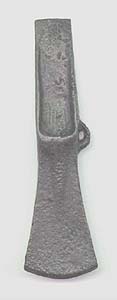
Late Bronze Age socketed axe (U.K.?)
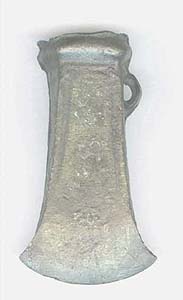
Typical Middle Bronze Age British or Western-Dutch (Voorhout) axe.
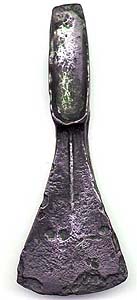
Scandinavian Bronze Age razors were frequently decorated with symbols which had a religious meaning.
The head of the sun chariot's horse can be found on one of them, and the 4 spoked sun disk on another.
Experiments showed: there must be at least 25 % tin in the bronze to provide the necessary sharpness.

Bronze Dutch "Bombenknopf-" or "onion-" pins, Ockstadt type. Some of them could have contained a small pebble. Dates unknown. From left to right:
-
Oosterhout. Length: 52,2 cm.
-
Nijmegen. Length: > 37,1 cm.
-
museum Rhenen. Length: > 50,2 cm.

Bracelets, 8th century B.C.E., Onstwedde.
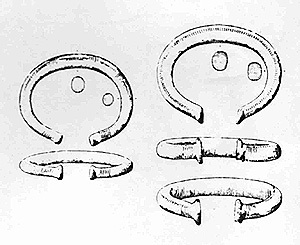
Socketed chisels, 8th century B.C.E., Deurne.
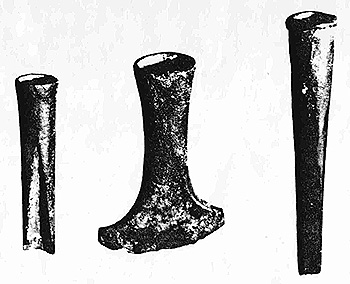
Uddelerveen, Bronze Age, bronze torc
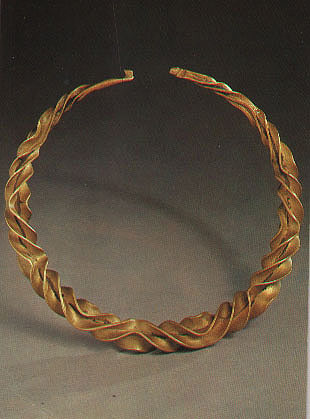
Bronze findings at Berg-en-Terblijt, 1000 B.C.E.
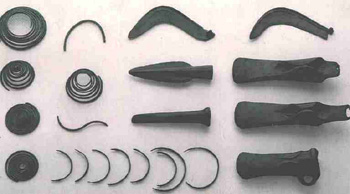
Solid hilted bronze swords
Late Bronze Age swords:
solid hilted (a-c), carp's tongue (d), flange hilted long sword (e)
a) Bergeyk (watch also next photo)
b) between Tegelen and Blerik
c) Nijmegen
d) Nijmegen
e) Wessem
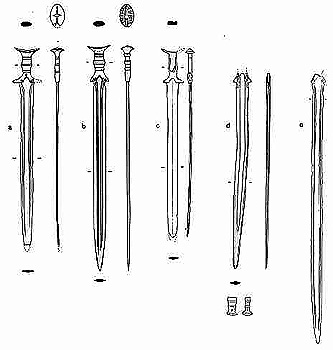
An overview of bronze axes during the Bronze Age
a) flat axe
b) c) edged axes
e) palstave
g) winged axe
h) socketed axe
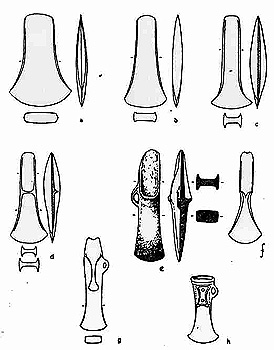
Late Bronze Age types of swords:
Ewart Park (a-d) and Thames swords
a) unknown
b) Millingen
c) Nijmegen / Arnhem
d) Millingen
e) Nijmegen
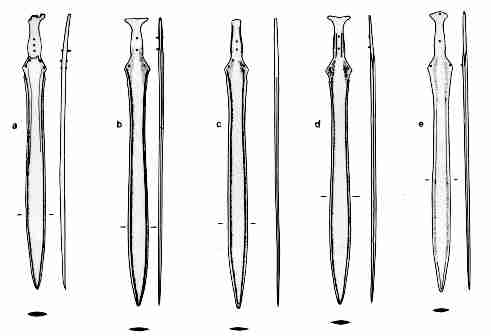
The remains of Emmer-Erfscheidenveen Man were found in 1938 in the southern part of Drenthe in the Netherlands. The body was poorly preserved, but the remains of his woolen undergarment survive. The textile is executed in a plain tabby weave and is decorated with embroidery along the hem. The man lived in the second half of the Bronze Age, sometime between 1310 and 1050 B.C. (Drents Museum,
Assen, NL)
Reconstructed outfit from a bog body:
-
the hat is sheepskin (fur inside, tail still attached)
-
the "dress" is woven wool
-
the cape is patchwork with leather strings attached
-
the shoes are made from deer skin, fur inside
I have reconstructed the shoes and tested them in all kinds of wheather; they prooved to stay dry in 15 cm of mud and warm enough during -15oC (no socks...)
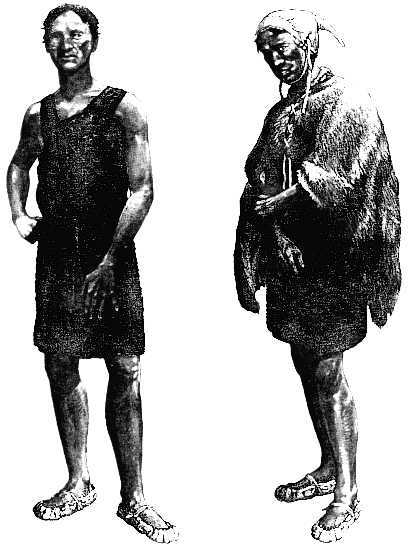
Like many other Bronze and Iron Age findings from the Westeuropean prehistory, the following "Hunze-Eems" objects were also sacrificed and thrown into a moor.
Schoonebeek, Late Bronze Age
-
socketed axes
-
2 socketed urnfield knifes
-
a decorated "T-knife"
-
a "sacred" object or handle
-
a spearhead.
Vadsby, Denmark: bronze anvil to make (gold?) threads, about 900 or 800 B.C.E.
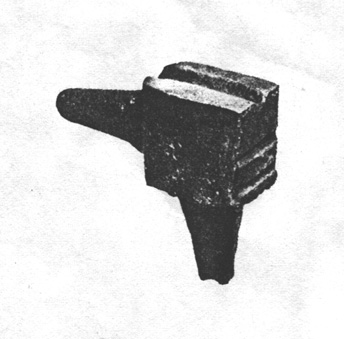
Bargeroosterveld, Late Bronze Age, about 800 B.C.E., bronze bracelets
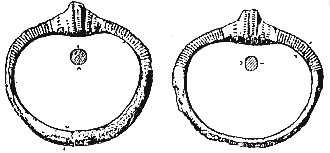
Havelte, 8th century B.C.E., bronze mould with newly casted bronze axe
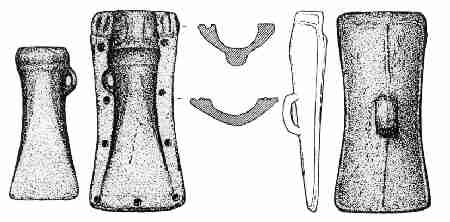
Drouwen (top) and Havelte, 8th century B.C.E. bronze casting remains from socketed axes
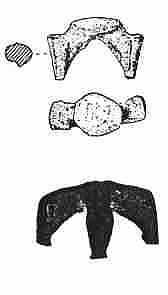
Bronze T-knifes, 800 - 700 B.C.E., Hardenberg, Appelscha, Valthe, Vroomshoop

More bronze "T" - knifes

Bronze melting in the Archeon (archaeological theme park, Netherlands) without charcoal, 1996

Archeon bellows
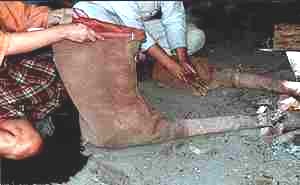
Information about the writer / editor